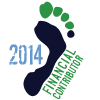I ran 4 miles barefoot on Friday no problem.
On Sunday I ran slightly further along the same route but got 2 cuts in the usual places (top of the balls of the feet, towards the toes, in the middle), the reason being, I am sure, is that I went for a barefoot walk to the gym on Saturday (1.5 miles) which meant the skin didn't get enough rest.
You experienced folk explained to me that it's less hardening of the skin and more muscle/tendon/bone strengthening which enables you to run further without cutting your skin.
My questions are:
1) How can you improve technique over rough ground? Ken Bob talks about 'lifting your feet' rather than pushing them down. I get what he's aiming for but this sounds incredibly complicated.
2) Is this something my body will naturally adapt to over time? Will the weakness / bad technique automatically improve over time, as long as I stick to fairly rough / stony ground.
All over the above walking and running has been over fairly rough pavement with small stones all along. There's very little smooth pavement or roads near me.
Thanks again for all your comments and insight.
On Sunday I ran slightly further along the same route but got 2 cuts in the usual places (top of the balls of the feet, towards the toes, in the middle), the reason being, I am sure, is that I went for a barefoot walk to the gym on Saturday (1.5 miles) which meant the skin didn't get enough rest.
You experienced folk explained to me that it's less hardening of the skin and more muscle/tendon/bone strengthening which enables you to run further without cutting your skin.
My questions are:
1) How can you improve technique over rough ground? Ken Bob talks about 'lifting your feet' rather than pushing them down. I get what he's aiming for but this sounds incredibly complicated.
2) Is this something my body will naturally adapt to over time? Will the weakness / bad technique automatically improve over time, as long as I stick to fairly rough / stony ground.
All over the above walking and running has been over fairly rough pavement with small stones all along. There's very little smooth pavement or roads near me.
Thanks again for all your comments and insight.















